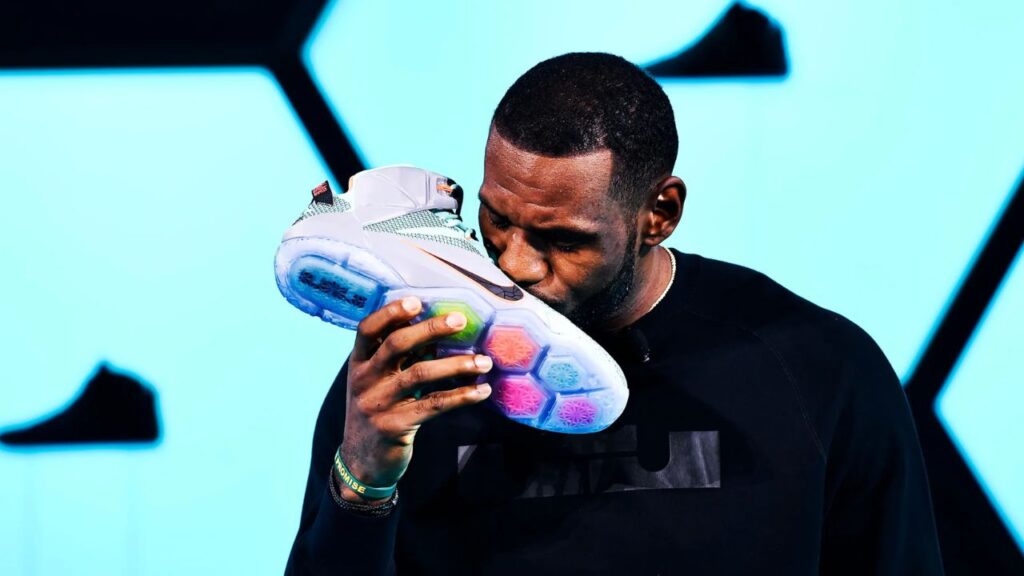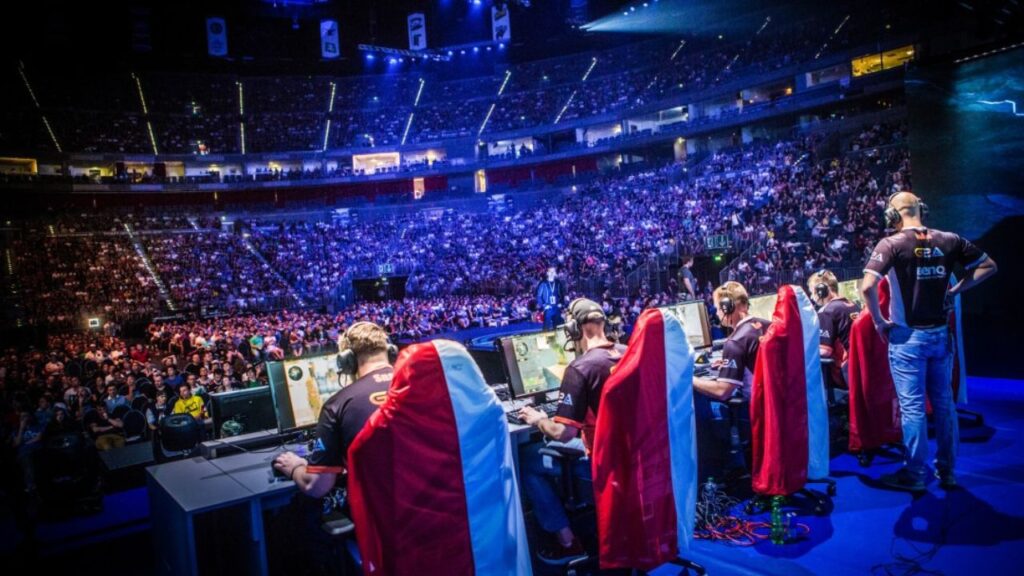Sports marketing in 2025 is defined by rapid digital transformation, athlete empowerment, and a relentless focus on fan engagement. Athletes are no longer just icons on the field—they are influential digital creators, trusted brand ambassadors, and powerful community builders. Meanwhile, digital revenue streams are exploding, with streaming, data, and immersive fan experiences reshaping how sports organizations, brands, and athletes monetize attention. This comprehensive, research-based article explores the key trends driving this evolution, backed by the latest industry data and actionable insights.
1. Athlete-Driven Influence: The New Power Players
In the past, brands and leagues controlled the sports marketing narrative. Today, athletes have become media companies in their own right. Their authenticity, relatability, and direct access to fans make them unrivaled marketing assets.
- Engagement Rate: Athletes drive 3.4x higher engagement than traditional celebrities.
- Brand Trust: 78% of fans trust athlete recommendations, compared to just 52% for other influencers.
- Purchase Intent: 65% of consumers are more likely to buy athlete-endorsed products.
Why Athletes Are So Effective
- Performance Credibility: Fans see athletes as experts in fitness, nutrition, and lifestyle, lending authority to endorsements.
- Emotional Connection: Parasocial relationships—fans feel they “know” athletes—create loyalty and influence.
- Demographic Reach: 82% of Gen Z follows sports content, making athletes key to reaching younger audiences.
Athlete Storytelling: Authenticity Wins
Athletes like LeBron James, Megan Rapinoe, and Cristiano Ronaldo have mastered storytelling. They share training routines, family moments, and social causes, inviting fans into their lives and building trust that brands can leverage.

2. Social Media: The Engine of Athlete Branding
Athletes maintain a strong presence across Instagram, TikTok, X (Twitter), and YouTube, reaching diverse audiences and maximizing exposure. Cross-platform strategies ensure content is tailored for each demographic.
- Follower Growth: Top athlete influencers see 25% annual increases.
- Story Views: 2.8 million average per post.
- Conversion Rate: 12% higher than traditional ads.
Real-Time, Relatable Content
- Live Q&As and AMAs: Direct fan engagement.
- Behind-the-Scenes: Training, recovery, and daily life.
- Advocacy: Social justice, mental health, and charitable causes.
Data-Driven Partnerships
Brands use analytics to measure athlete influence, track campaign ROI, and optimize collaborations.
3. Digital Revenue: Beyond the Stadium
Global sports streaming revenue surpassed $100 billion in 2025, driven by subscriptions and ad-supported innovations. Major platforms—ESPN+, DAZN, Amazon Prime Video—are investing heavily in exclusive sports rights, shifting fans from cable to direct-to-consumer (DTC) models.
Key Revenue Streams
- Subscription Models: SVOD (Subscription Video On Demand) and hybrid tiers dominate, offering exclusive content and personalized experiences.
- E-Commerce & Merchandising: Athletes and teams launch branded merchandise, limited drops, and digital collectibles.
- Virtual Events & Experiences: Virtual meet-and-greets, live chats, and NFT collectibles create new monetization avenues.
- Advertising & Sponsorship: Digital platforms offer targeted ad slots and branded content, increasing ROI for sponsors.
Data Monetization
First-party (1P) data is now the most valuable asset. Sports organizations collect fan data to personalize offers, improve engagement, and monetize through partnerships and targeted campaigns.

4. AI, Data, and Hyper-Personalization
AI is transforming sports marketing, especially for resource-strapped teams and leagues. It enables:
- Automated Content Creation: AI tools generate highlight reels, social posts, and personalized emails at scale.
- Programmatic Ad Spending: AI optimizes ad placements and budgets in real time.
- CRM Optimization: AI-driven CRM systems segment fans, predict behaviors, and automate engagement.
Hyper-Personalized Fan Experiences
Fans now expect content tailored to their interests. By leveraging data analytics, sports organizations deliver:
- Custom Content: Personalized event invites, news, and offers based on fan behavior.
- Exclusive Access: VIP packages, behind-the-scenes tours, and loyalty-based perks.
- Interactive Tools: AI-powered apps that let fans choose camera angles or curate their own highlights.

5. Immersive & Experiential Marketing
Brands are moving beyond traditional ads to create multisensory, immersive experiences. 63% of consumers want brands to deliver experiences that engage all their senses, making them feel present and connected.
- Spatial Computing & AR/VR: Virtual stadium tours, augmented reality stats overlays, and interactive replays deepen fan engagement.
- Experiential Events: Pop-up fan zones, live watch parties, and branded installations turn spectators into participants.
World-Conjuring Tech
Spatial computing, AI, and accessible creation tools empower fans to co-create experiences, fostering a sense of community and shared ownership.

6. Community-Led and Grassroots Campaigns
Associations and brands are shifting toward community-driven initiatives, leveraging the authentic voices of athletes, volunteers, and fans.
- User-Generated Content (UGC): Hashtag challenges and social campaigns encourage fans to share their own stories and experiences.
- Online Communities: Forums and groups where fans connect, share, and influence brand narratives.
Why It Works
- Authenticity: Real stories from real people build trust and loyalty.
- Retention: Community engagement increases member retention and attracts new fans.

7. Sponsorships & Brand Partnerships in the Digital Age
Sophisticated fan data allows brands to measure ROI, track engagement, and optimize sponsorships in real time.
- Globalization: Understanding regional fan nuances is crucial for effective sponsorship, especially in sports like football with diverse global audiences.
- Value-Driven Partnerships: Brands seek collaborations that align with social values—sustainability, diversity, and inclusion.
Case Study: Football’s Global Appeal
With 51% global fandom, football offers unparalleled sponsorship opportunities. However, brands must tailor strategies to local cultures and fan behaviors to maximize ROI.
8. E-Sports and New Market Frontiers
E-sports continues to surge, with massive online audiences and innovative revenue models. Brands sponsor tournaments, teams, and streamers, reaching younger, tech-savvy fans.
Investment in women’s sports and niche leagues is accelerating, driven by rising viewership and digital accessibility. Digital platforms enable these leagues to build audiences and monetize effectively.

9. Challenges and Future Outlook
With more content and platforms than ever, capturing fan attention is harder. Brands must balance innovation with authenticity, ensuring they deliver real value.
The Enduring Power of Brand
As digital strategies become more formulaic, brand identity is more important than ever. Successful organizations invest in both data-driven tactics and creative storytelling to stand out.
The Road Ahead
The future of sports marketing is digital, data-driven, and athlete-powered. Brands and organizations that embrace innovation, authenticity, and community will lead the next era of sports business.
In Conclusion
The sports marketing landscape in 2025 is defined by athlete-driven influence, digital innovation, and a focus on personalized, immersive fan experiences. Athletes are the new power players, leveraging authenticity and social media to drive engagement and revenue. Digital-first strategies—streaming, AI, data analytics, and community-building—are unlocking unprecedented opportunities for brands, leagues, and athletes alike. As the industry continues to evolve, those who invest in creativity, technology, and authentic connection will not just survive, but thrive in the new era of sports marketing.
FAQs
1. How are athletes changing the landscape of sports marketing?
Answer:
Athletes today are powerful digital influencers who connect directly with fans through social media, personal branding, and authentic storytelling. Their ability to engage audiences, drive brand trust, and promote products has shifted the focus from traditional advertising to athlete-driven campaigns. Brands now collaborate with athletes not just for endorsements, but for co-creating content and building communities, resulting in higher engagement and stronger consumer loyalty.
2. What are the main digital revenue streams in modern sports marketing?
Answer:
Key digital revenue streams include direct-to-consumer (DTC) streaming platforms, e-commerce and merchandise sales, virtual events and experiences (such as NFTs and online meet-and-greets), and data-driven advertising. Sports organizations and athletes are also leveraging social media monetization, personalized fan subscriptions, and targeted digital sponsorships to diversify and increase their income.
3. How is artificial intelligence (AI) used in sports marketing?
Answer:
AI is revolutionizing sports marketing by enabling hyper-personalized fan experiences, automating content creation, and optimizing ad placements. AI-powered analytics help teams and brands understand fan preferences, predict behaviors, and deliver tailored content and offers. This leads to more effective marketing campaigns, increased fan engagement, and higher ROI for sponsors and advertisers.
4. What role does social media play in the success of athlete-driven marketing?
Answer:
Social media platforms like Instagram, TikTok, and X (Twitter) are central to athlete-driven marketing. They allow athletes to share real-time updates, behind-the-scenes content, and personal stories, fostering deeper connections with fans. Social media also amplifies campaigns, increases brand visibility, and provides valuable data for measuring engagement and campaign effectiveness, making it an essential tool for modern sports marketing.
